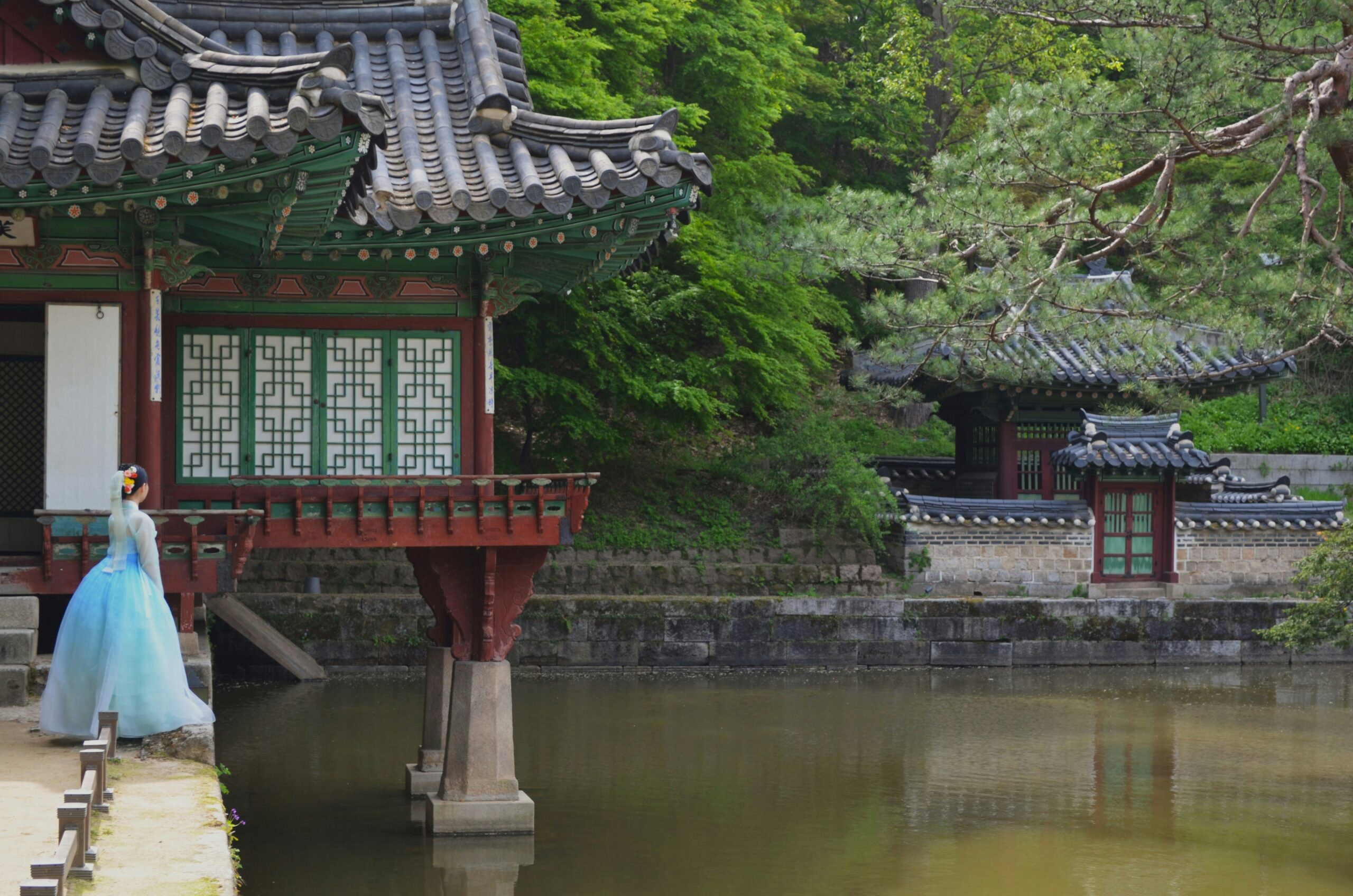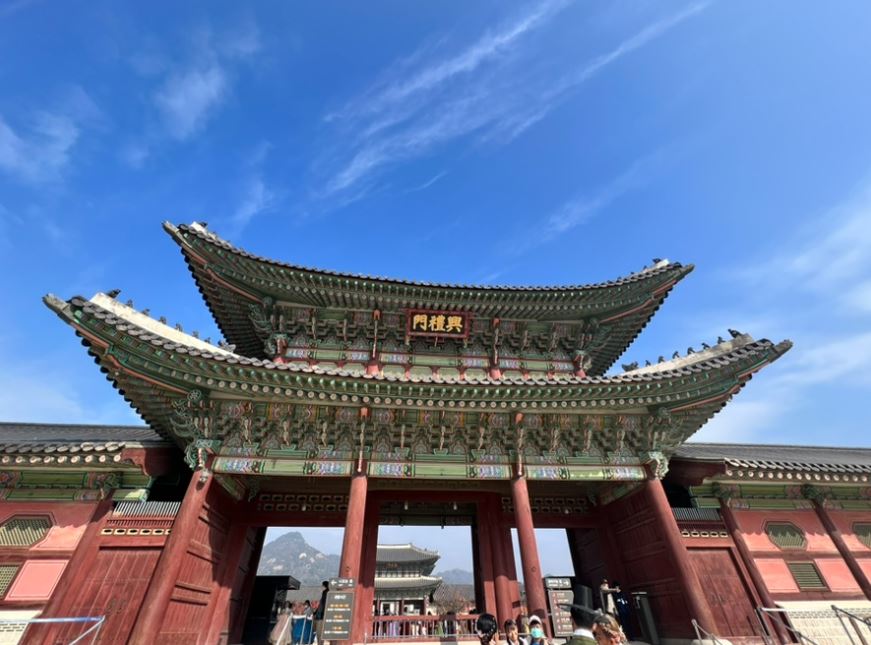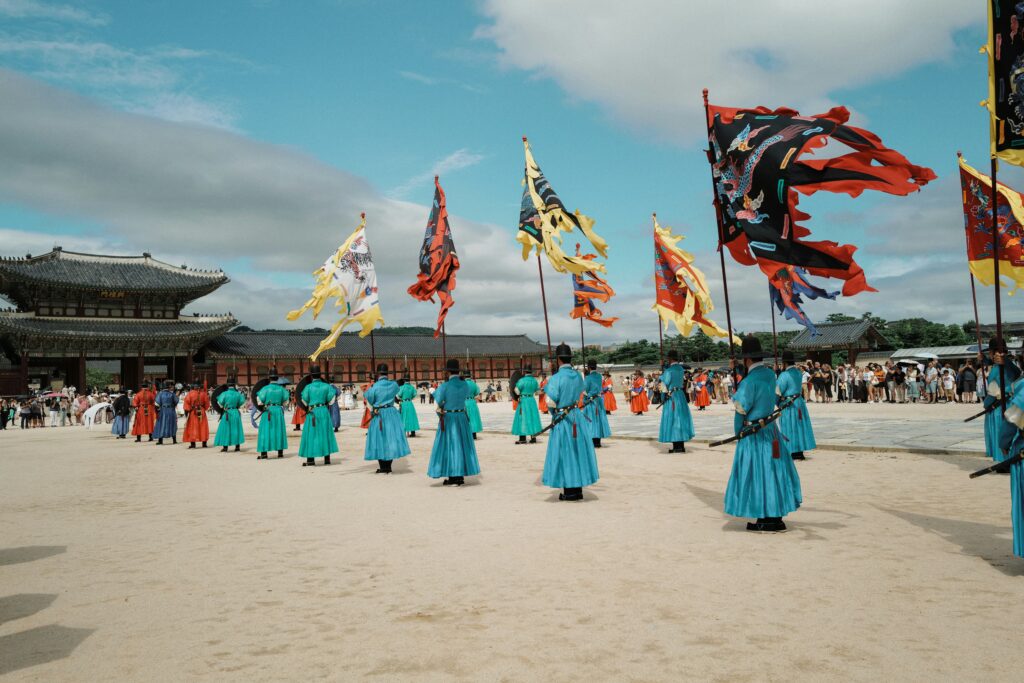Wenn Sie nach Seoul reisen, gibt es viele Sehenswürdigkeiten, die Sie besuchen können. Aber Gyeongbokgung Palace ist ohne Zweifel der Höhepunkt jeder Reise in die südkoreanische Hauptstadt. Warum ist dieser prächtige Palast so beliebt und gilt als das Nummer-eins-Reiseziel in Seoul? Lassen Sie uns einige der Gründe erkunden, die Gyeongbokgung zu einem Muss für jeden Besucher machen.

1. Reiche Geschichte und Kultur
Gyeongbokgung Palace, was so viel wie „Palast, der vom Himmel gesegnet ist“ bedeutet, wurde 1395 während der Joseon-Dynastie erbaut. Es war der Hauptsitz der königlichen Familie und ein Zentrum der koreanischen Kultur und Politik. Die beeindruckende Architektur und die wunderschön angelegten Gärten spiegeln die reiche Geschichte Koreas wider.
2. Architektonische Schönheit
Der Palast ist ein Meisterwerk traditioneller koreanischer Architektur. Mit seinen aufwendig verzierten Hallen, schimmernden Dächern und weitläufigen Anlagen bietet Gyeongbokgung ein einzigartiges visuelles Erlebnis. Besonders der Geunjeongjeon, der Thronsaal, ist ein beeindruckendes Beispiel für die königliche Pracht.
3. Ästhetische Gärten und Natur
Gyeongbokgung ist nicht nur ein Ort der Geschichte, sondern auch ein schöner Ort, um die Natur zu genießen. Die weitläufigen Gärten und Teiche, wie der Hyangwonjeong Pavilion, laden dazu ein, sich zu entspannen und die friedliche Umgebung zu genießen. Die Kombination aus Natur und Architektur schafft eine harmonische Atmosphäre, die Besucher fasziniert.
4. Die Wachablösung
Eine der bekanntesten Attraktionen des Palastes ist die Wachablösung, die täglich vor dem Gwanghwamun-Tor stattfindet. Diese farbenfrohe Zeremonie zieht viele Zuschauer an und gibt einen Einblick in die königlichen Traditionen der Joseon-Dynastie. Es ist ein faszinierendes Erlebnis, das man nicht verpassen sollte.

5. Zugang zu anderen Sehenswürdigkeiten
Gyeongbokgung liegt in der Nähe weiterer wichtiger Sehenswürdigkeiten. Nach dem Besuch des Palastes können Sie den National Palace Museum of Korea und das National Folk Museum erkunden. Außerdem sind die malerischen Viertel Insadong und Bukchon Hanok Village zu Fuß erreichbar, die beide für ihre Kultur und Küche bekannt sind.
6. Einfache Erreichbarkeit
Der Palast ist leicht mit den öffentlichen Verkehrsmitteln zu erreichen. Die U-Bahn-Station Gyeongbokgung (Linie 3) befindet sich nur wenige Gehminuten vom Palast entfernt. Diese zentrale Lage macht es für Touristen einfach, Gyeongbokgung in ihre Reisepläne zu integrieren.
Fazit – Ein Muss in Seoul
Gyeongbokgung Palace ist mehr als nur ein touristischer Hotspot; er ist ein Symbol der koreanischen Identität und Geschichte. Mit seiner atemberaubenden Architektur, den schönen Gärten und den faszinierenden Traditionen zieht er Besucher aus der ganzen Welt an. Wenn Sie Seoul besuchen, sollten Sie Gyeongbokgung Palace auf keinen Fall auslassen – er wird Sie mit seiner Schönheit und Geschichte verzaubern.

